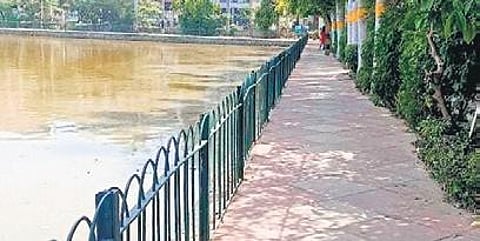

The famous quote ‘water, water everywhere and not a drop to drink’ is quite apt for residents of Model Town in North Delhi which lies adjacent to Naini lake, a water body spread over 6.5 acres.
Whenever there is a low supply of water in the national capital, whether it’s due to low level of water in the Yamuna River, power cuts or issues with water treatment plants, Model Town is one of the first localities to be affected, rue the residents of the upscale neighbourhood.
“For the last two years, we have been facing acute water shortage in the locality. Even as the summer approaches and the phenomenon of heatwaves are on the rise, there is no respite for us on this issue despite Delhi Jal Board (DJB) and other concerned authorities being well aware of the situation,” said Sanjay Gupta, general secretary of Model Town Residents Society.
The residents of C and G blocks are getting muddy and smelly water and the normal water supply is restricted only to 2 hours a day which, during peak summer, is done just once in 36 hours.
“In March, following persistent complaints, we had a meeting with area MLA Akhilesh Pati Tripathi who promised that a borewell will be installed within 4-5 days and the issue will be solved. MP Raghav Chadha was also present during the meeting. However, there has been no progress on this,” Gupta said.
Model Town, which is facing Naini Lake, was built in the early 1950s and is divided into several blocks and sub-colonies. The lake, once a major attraction in the area, has now been neglected for a long time by the authorities and no maintenance activity is being done, according to residents. The revival of the water body was proposed nearly a decade back, but nothing ever came of it.
“The MP, MLA and MCD are silent on the issue. If immediate action is not taken, the precious water body will slowly die,” Gupta said. Overflowing drains is a common sight in the area, he said, adding that the desilting of a low-lying area happened only on paper. Sewers are of insufficient capacity as compared to the population now and during the rainy season, the situation gets really bad, he added.
“Since the 1977 floods, the area has always had the issue of overflowing drains. Every day, at least a sewer will be blocked here. The worst sufferers are the owners of old houses built in the neighbourhood; if you open any sewer you can see it’s overflowing,” Gupta added.